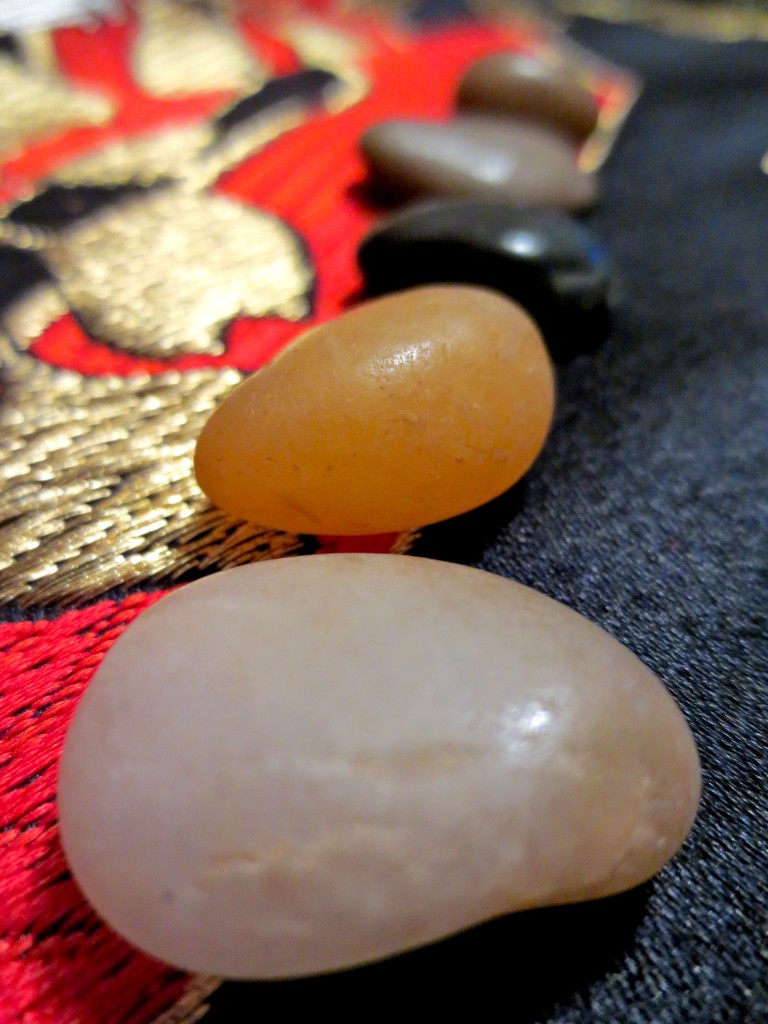It Takes Time
"I-NEED-TO-SAY-SOMETHING!" This was delivered in a wail that swirled up and out of the small boy, all the words joined together in a heart-wrenching song, punctuated with clenched hands and rigid legs. This was not a simple need, he was compelled, heart, body, and soul to say something, but on this day, at that moment, it wasn't going to happen.
I use a tray containing 5 stones during our circle time in something that could be described as a ritual. This is how the children approach it. It is a significant moment of their day. Like many rituals, it is lovely and follows a certain prescribed flow. Each participant brings something uniquely their own while taking from it something deeply personal. On the surface, it would appear that we are using these stones as part of a show and tell routine. By using 5 stones, the children learn to count and carefully subtract, all while assigning a very special value to each stone moved.
Those are surface level, the stones are part of something much larger. At any given point of the day, we are modeling or providing opportunities for the children to communicate with each other, this is job one. As a teacher, a parent, and community member, I want to make sure we are constantly thinking about social language (pragmatics) and cultivating social language. So I seek out training, texts, and research about acquisition and development of social language, I share this information with parents, and we talk with the children about language and how it is used to communicate, to solve problems, and to share ideas. The majority of our school day is spent in play as this is where children practice social language. So in the scheme of things, the stones ritual is just a blink of an eye, but it is important enough to witness the lovely developmental arc of a single child as he works to acquire the buffer that many of us take for granted while a community of children, his peers, learn to wholeheartedly support him in his growth.
It simply takes time and we have it, lots of it, so we saw all that happen.
There are 5 stones. A child shares something--every few weeks, I change the parameters of the share in order to model different aspects of communication both receptive and expressive. We begin with something that, again, seems simple, but is actually quite complicated for a young child. It is about context. The child with the stones will share "something from my life". Then she or he will call a child's name and move a stone for each responder. The responders are encouraged to share something back that is connected with the original comment somehow. As the year progresses, I will introduce other components of conversation like questions and statements, conceptual information, and descriptors, all through the give and take of the stones.
There are ONLY 5 stones. This means that in a class of 18, thirteen children will not have a turn to speak. This means that thirteen children will add a little bit of resiliency to their skill set that day. For children with a deep buffer well, the patience and fortitude required to watch those 5 stones pass them comes easy. For children like the little one who begins this story, each stone attached to another person's name feels like an irretrievable loss.
But then, with time, something beautiful happens. In the beginning, I model the words to guide letting go, to let him know that there is time, to let him and others know how to build up reserves for waiting, to reassure them that we will listen at another time, that their words have value. In just a few short weeks, the children begin to use that same language that was modeled. As they see that there are just one or two stones remaining, they give advance warning and reassure the group that there will be more time to talk later. That is not all, they call on their own internal buffering system, their own wells to extend understanding, and they make sure to call those children whose need to share back overwhelms them. They take care of each other. There was an unspoken agreement that our little one would always have a stone. His need was recognized and accepted and when there was a need that seemed greater for that day, the sharer took the time to explain it in advance. That is empathy and what a wonderful thing to see growing.
It just takes time.

